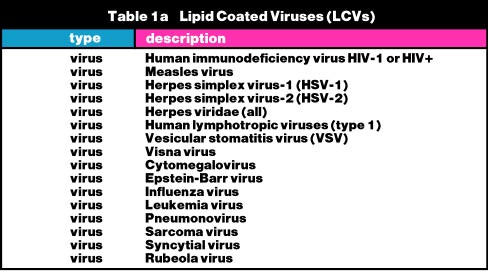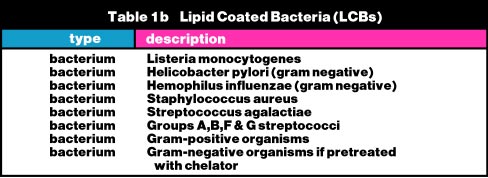I hope my write-up on Monolaurin / Lauricidin / Lauric Acid is informative and helpful. If you have questions about this or a particular condition or would like information on how to become a new patient, please feel free to contact my office. Advanced Healing Center of Orange County, the practice of Dr. Marcus Ettinger. Phone: 714-639-4360, E-mail: info@advancedhealing.com, Mail: 630 South Glassell Street #103. Orange, CA 92866.
What is Monolaurin and Lauric Acid?
Lauric acid is a 12-carbon medium-chain fatty acid (MCFA) found naturally in human breast milk (6.2% of total fat) and coconut oil (47.5% by weight). Lauric acid was originally discovered when microbiologists studied human breast milk to determine the protective (antiviral and antibacterial) substances which protected infants from microbial infections. Other fatty acids were also found to have antimicrobial actions but lauric acid was found to be the most active. Lauric acid is able to disrupt the cell membrane of gram positive bacteria by physicochemical (physical and chemical) processes. Once inside the cell, it can interfere with bacterial cell signal transduction and gene transcription processes. Its activity is generally better at low pH and is diminished by Mg2+ and Ca2+
A chemical reaction, known as esterification¹, combines lauric acid and glycerol to yield an amazing compound known as monolaurin (glycerol monolaurate). This reaction can occur within our body and in a laboratory. Monolaurin acts as a surfactant², which possesses an even greater antiviral and antibacterial activity than its precursor, lauric acid. Monolaurin, when given orally, at therapeutic doses between 2,500 – 9,000 mg/day is generally well tolerated, with loose bowels as the only negative concern. Monolaurin has been extensively studied at medical research centers, including the Center for Disease Control (CDC), because of its high antimicrobial (antiviral, antibacterial, antifungal, antiyeast, and antiprotozoal) activity. These studies have provided information about the antiviral and antibacterial mechanisms of monolaurin. Monolaurin was found to be effective against certain Lipid Coated Bacteria (LCBs) and Lipid Coated Viruses (LCVs) – enveloped DNA and RNA viruses.
¹Esterification: Esterification is the generic term for the chemical reaction in which two reactants (typically an alcohol and an acid) form an ester as the reaction product. Esters are common in organic chemistry and biological materials and often have a characteristic pleasant, fruity odor. This leads to their extensive use in the fragrance and flavor industry
²Surfactant: Surfactants are compounds that lower the surface tension of a liquid, allowing easier spreading, and lowering of the interfacial tension between two liquids, or between a liquid and a solid. Surfactants may act as detergents, wetting agents, emulsifiers, foaming agents, and dispersants.
HIV-1, Influenza virus, paramyxoviruses, rubeola virus, bronchitis virus, and the herpes family of viruses (Epstein-Barr (EBV), Cytomegalovirus (CMV), zoster (Chicken pox), varicella-zoster (shingles) and herpes type I and II). Sadly, monolaurin had no effect on diseases caused by non-enveloped viruses such as the polio virus, coxsackie virus, encephalomyocarditis virus, rhinovirus, and rotaviruses.
Helicobacter pylori (H. pylori), Staphylococcus aureus and Streptococcus agalactiae.
The antiviral and antibacterial action attributed to monolaurin are that of making soluble the fats in the protective envelope, causing the disintegration of the microbial membrane. This process works more efficiently when combined with metal chelating agents, such as EDTA and lactoferrin, and mucolytics, like NAC and guaifenesin. Recent publications have shown that monolaurin and lauric acid inhibit the replication of viruses by interrupting the communication and binding of the virus to host cells and thus preventing the uncoating of viruses necessary for replication and infection. Other studies have shown that monolaurin is able to remove all measurable infectivity by directly disintegrating the protective bacterial and viral lipid envelope. Binding of monolaurin to the viral envelope also makes the virus more susceptible to degradation by host defenses, heat, or ultraviolet light. (Projan et al 1994, Hornung et al 1994, Witcher et al, 1993)
Monolaurin and Lauricidin was one of the first components of my biofilm protocol when I developed it, for the natural treatment of H. pylori, back in 2007. Since then I have found it to be an indispensable supplement in my practice.
Additional Reading:
- The Properties of Lauric Acid and Their Significance in Coconut Oil
- A Review of Monolaurin and Lauric Acid – Natural Virucidal and Bactericidal Agents.
- Microorganisms Inactivated by Monolaurin
Purchasing
Ecological Formulas Monolaurin (600 mg’s – 90 caps) $34.00 or Lauricidin® 227gr $40.00 Call to Purchase 714-639-4360
Monolaurin, Lauricidin and Lauric Acid In The News
Mol Cell Biochem. 2005 Apr;272(1-2):29-34
Minimum inhibitory concentrations of herbal essential oils and monolaurin for gram-positive and gram-negative bacteria
Preuss H.G., et. al., Department of Physiology and Biophysics, Georgetown University Medical Center, Washington, DC 20057, USA. preusshg@georgetown.edu
New, safe antimicrobial agents are needed to prevent and overcome severe bacterial, viral, and fungal infections. Based on our previous experience and that of others, we postulated that herbal essential oils, such as those of origanum, and monolaurin offer such possibilities. We examined in vitro the cidal (def. killing, as in bactericidal) and/or static effects of oil of oregano, several other essential oils, and monolaurin on Staphylococcus aureus, Bacillus anthracis Sterne, Escherichia coli, Klebsiella pneumoniae, Helicobacter pylori, and Mycobacterium terrae. Origanum (oregano) proved cidal to all tested organisms with the exception of B. anthracis Sternein which it was static. Monolaurin was cidal to S. aureus and M. terrae but not to E. coli and K. pneumoniae. Unlike the other two gram-negative organisms, H. pylori were extremely sensitive to monolaurin. Similar to origanum, monolaurin was static to B. anthracis Sterne. Because of their longstanding safety record, origanum and/or monolaurin, alone or combined with antibiotics, might prove useful in the prevention and treatment of severe bacterial infections, especially those that are difficult to treat and/or are antibiotic resistant (also see biofilm, as a source of antibiotic resistance).
Note: Monolaurin has been shown to inactive many forms of bacteria and virus’ that are protected by an outer lipid membrane, known as an envelope (H. pylori cell envelope). The mechanism is due to monolaurin’s ability aid in the disintegration of this lipid membrane.
___
http://www.advancedhealing.com/antiviral-antibacterial-actions-of-monolaurin-and-lauric-acid/



